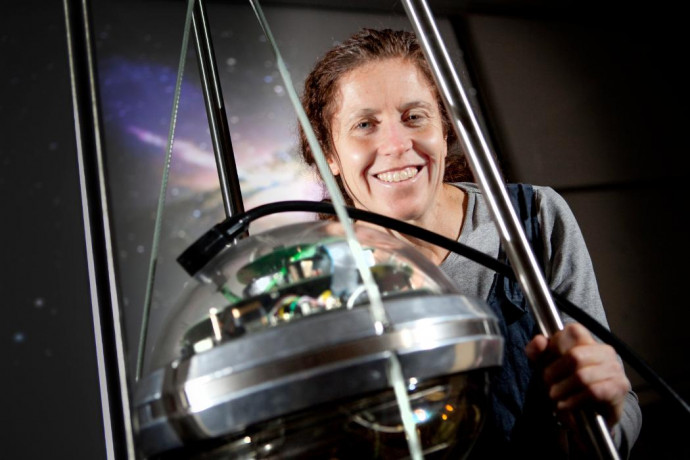Research
Published 18 July 2023First image of Milky Way neutrinos detected by IceCube

For the first time, a neutrino image of the Milky Way was produced by an international team of scientists, including researchers from the University of Canterbury, using a huge Antarctic telescope
Originally published by the University of Canterbury, 30 June 2023
The IceCube Neutrino Observatory in Antarctica has produced an image of the Milky Way using neutrinos.
The neutrino portrait of our galaxy reveals high-energy particles from within the Milky Way explains New Zealand scientist Physics Professor Jenni Adams from the University of Canterbury’s School of Physical and Chemical Sciences and a member of the IceCube Collaboration.
This research brings humanity closer to finding some of the galaxy’s most extreme environments, she says. Our Milky Way galaxy is an awe-inspiring feature of the night sky, viewable with the naked eye as a horizon-to-horizon hazy band of stars. Now the IceCube neutrino observatory has detected high-energy Milky Way neutrinos, with energies millions to billions of times higher than those produced by the fusion reactions that power stars.
Neutrinos are tiny, ghostlike astronomical messengers that offer a unique view into the high-energy Universe. IceCube is a mountain-sized telescope that encompasses a cubic kilometre of deep Antarctic ice instrumented with over 5000 light sensors. The one-of-a-kind detector searches for signs of high-energy neutrinos originating from our galaxy and beyond, out to the farthest reaches of the universe.
“We know there are cosmic engines in our galaxy which are capable of accelerating particles to high energies, but we don’t have a detailed model of how these work,” says Professor Adams. “We don’t know the energy limit of our Galaxy’s particle accelerators. Neutrinos are the only direct messenger from these regions and can potentially reveal hidden features of our galaxy never before seen by humanity."
While IceCube has previously identified two extra-galactic sources of extremely energetic neutrinos, until now a neutrino counterpart to the Milky Way band had proved elusive.
“Observing our own galaxy for the first time using particles instead of light is a huge step”,
says University of Canterbury undergraduate student Rhia Hewett who is undertaking research to identify the most promising regions in our Galaxy for IceCube to search for neutrinos.
“But the result so far is just a neutrino glow from the whole of the Galaxy. Next, we want to identify individual neutrino sources in our Galaxy. In my research I am making models to predict the neutrino signal close to likely particle accelerators so we can target our searches for neutrinos. It is exciting to be taking part in this ground-breaking research as part of my undergraduate studies.”
The two main analysers for this new research are PhD students Mirco Hünnefeld, from the University of Dortmund, and Steve Sclafani, from Drexel University. They developed machine learning techniques to improve the identification of the neutrino signal in IceCube that enabled this breakthrough result.
The University of Canterbury IceCube research has been supported by the Marsden Fund Council from Government funding, managed by Royal Society Te Apārangi.The IceCube Neutrino Observatory is operated by the IceCube Collaboration, consisting of more than 350 scientists at 58 institutions around the world. Major funding comes from the US National Science Foundation, and from funding agencies in all other participating countries.
This research has been published in the journal Science.
Additional information: University of Canterbury press release
Additional information: Explainer article in The Conversation
RESEARCHER
Professor Jenni Adams
ORGANISATION
University of Canterbury
FUNDING SUPPORT
Marsden Fund Standard Grant
CONTRACT OR PROJECT ID
MFP-UOC1405: Probing the origins of high-energy cosmic rays with precision neutrino observations
